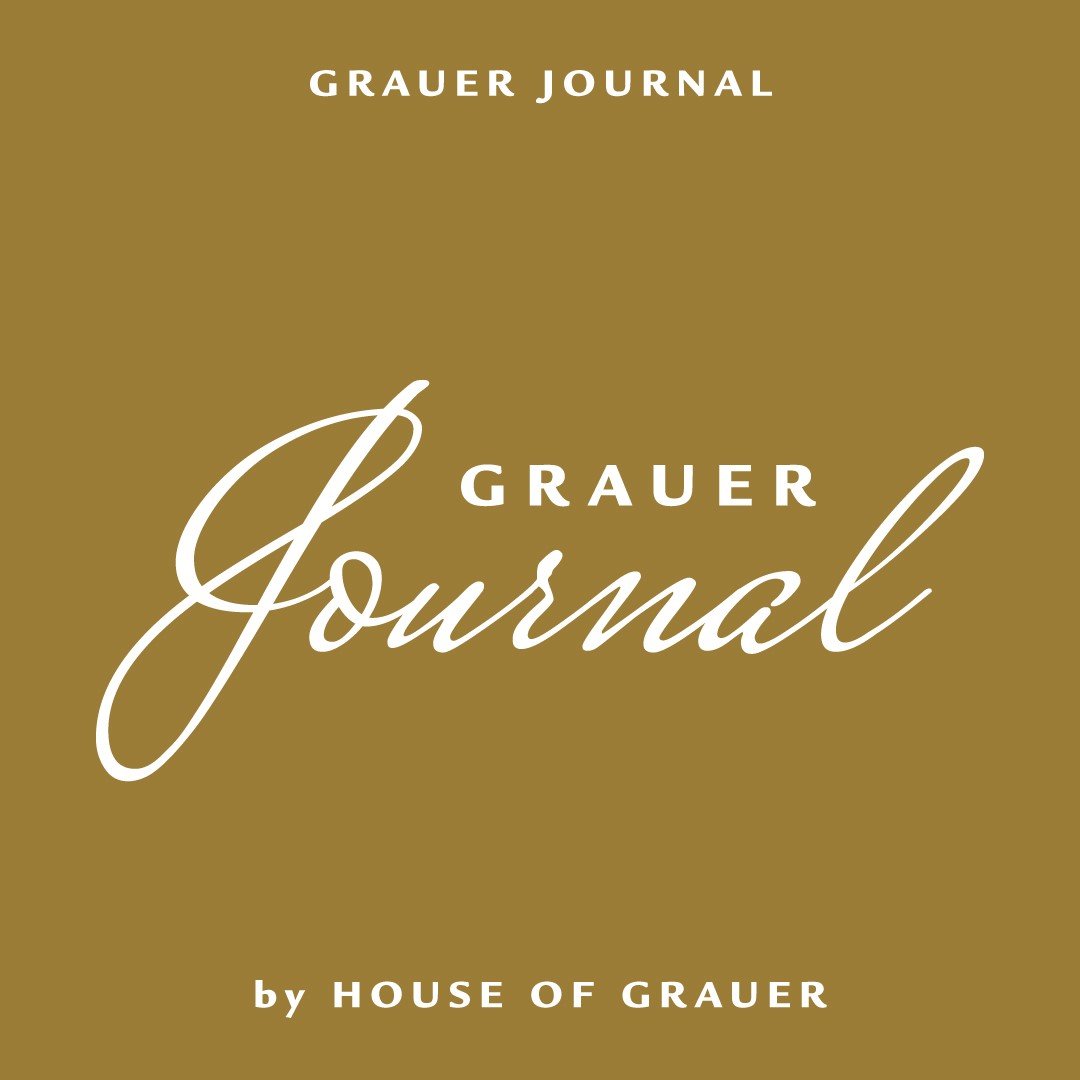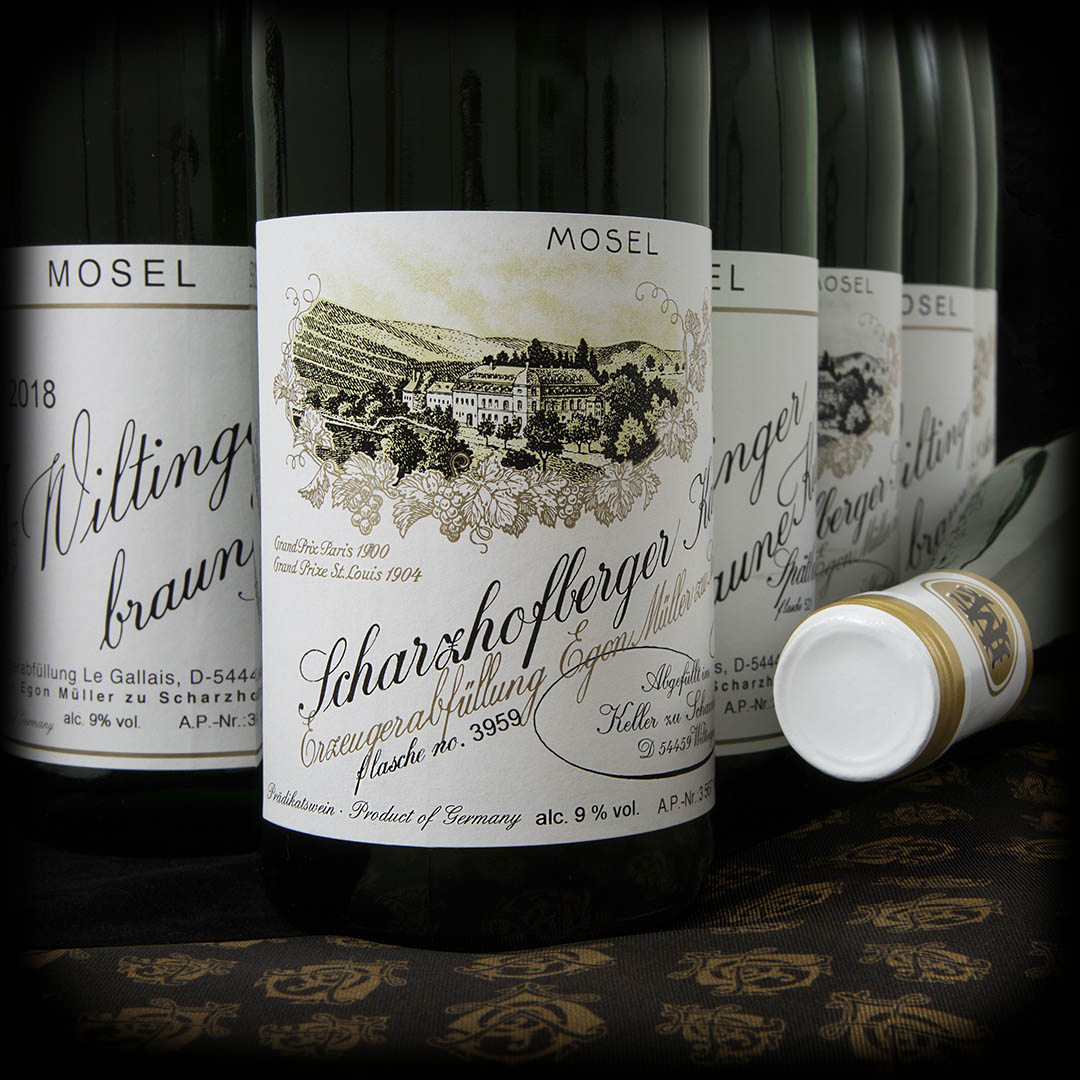Egon Müller Scharzhof
Exceptional German Rieslings!
The history of this legendary wine estate began in 1797, with Egon Müller's great-great-grandfather, Jean-Jacques Koch. In the small village of Wiltingen on the banks of the Saar, this visionary Benedictine monk acquired some 20 hectares on the Scharzhofberg hill. The estate came into the hands of the Müller family through the marriage of his eldest daughter, Elisabeth, who came into the world after her father had left the monastery and married. Elisabeth gave birth to Egon, the first of the name. The couple had other children, who shared the 20 hectares of vineyards. Thus, the Egon Müller Scharzhof estate that interests us today covers only 8.5 hectares.
All the generations that followed, by tradition, bore the same name and surname. The current heir is none other than Egon Müller IV, who took over the estate in 1991.
The Scharzhofberg hill is, as Jean-Jacques Koch had foreseen, favourable to the production of great Rieslings. A rather cool climate, combined with a southern exposure, an altitude of between 190 and 310 metres, very steep slopes and we obtain a terroir that is particularly favourable to vines.
The soils, composed of grey and red schist, store the heat of the day and release it at night to the vineyard, which allows the vines to benefit from a mild climate. In addition, they have the specificity of constituting a significant water reserve, allowing the vines to be fed in times of drought.
Following the development of the railways in the 19th century, this previously isolated region was able to develop, making the Scharzhofberg vineyard one of the most renowned in Germany, described as a living myth.
Considered sacred, this 8.5 hectare plot is the most important in the vineyard. Moreover, three hectares, dating from the 19th century, are still non-grafted vines, which means that the vines have not been attacked by phylloxera (aphid pests of the vine).
The Müller family is convinced that the quality of its wines is 100% born in the vineyard, and practices a close-to-nature approach. No artificial fertilizers or pesticides are used. The work in the vineyard is done manually with the greatest care. The vines, some of which date back to the last century, also contribute to the quality of the wine.
In the cellar, too, the work is done in a non-invasive way. As soon as the grapes arrive in the cellar, they are pressed vertically. The musts are then fermented with native yeasts in barrels that are about 40 years old. Thanks to the acidity of the wines, malolactic fermentation ends naturally. Finally, after racking, a second decanting is carried out before filtration and bottling. The result is exceptional Rieslings, intense and spicy, with salty and mineral notes.
It was the father of the present Egon Müller who started the production of sweet wines in 1959. Since then, the estate has been producing different cuvées, classified hierarchically in Germany according to the level of maturity of the grapes at the time of harvest.
Divided into two main categories, Qualitätswein and Pradikätswein, this qualitative hierarchy makes it possible to classify the wines according to their sugar content.
Qualitätsweins, "quality wines", are similar to the notion of AOC (Appellation d'origine contrôlée) as we know it, because the wine must come from one of the 11 German wine regions. This category of wine is of little interest to the wine lover as most of these wines are heavily chaptalised (sugar added to the must to increase the final alcohol content of the wine after fermentation).
Pradikätsweins, on the other hand, represent wines of a higher quality, made from naturally ripened grapes, without chaptalization. These wines are subject to even higher requirements in terms of weight and production. Certain techniques, such as mechanical harvesting, are prohibited.
Within this category we find:
- The Kabinetts, representing light, dry or slightly sweet wines with low alcohol content.
- The Spätleses, made from slightly late harvested grapes, which will require a few years of aging to improve.
- The Ausleses, giving more structured wines, mellow, botrytised or not, with an ageing potential ranging from 5 to 20 years.
- The Berrenauslese, almost always affected by noble rot and offering overripe, very sweet wines, made in years with exceptional climatic conditions.
- The Trockenbeerenausleses, offering an extremely botrytised sweet wine, picked grain by grain, with low alcohol content and great ageing potential.
- The Eisweins, obtained by pressing frozen, dried and selected grapes at a temperature not exceeding -7° between December and January. These grapes offer a very concentrated must.
The wines of Egon Müller's Scharzhofberger estate are extremely coveted because of their rarity. They are the source of the best Pradikätswein in Germany, renowned for their finesse, elegance, purity and incomparable length in the mouth. A perfect balance between sweetness and acidity allowing a great potential for ageing.
Internationally renowned, some of these vintages, which could be compared in terms of quality to those of the Domaine de la Romanée-Conti in Burgundy, are sold at auction and reach the highest levels.
Today, thanks to the work and passion of several generations of Egon Müller, the eponymous estate embodies one of the most mythical vineyards in the Saarland, making it one of the most renowned in Germany, if not the world. The succession of this excellence is now assured with the arrival of Egon V, born in 2000 and aged 22 years.
EGON MÜLLER SCHARZHOF - Riesling - Auslese - Scharzhofberger - 2015 - Bottle of 75 cl
EGON MÜLLER SCHARZHOF - Riesling - Scharzhof Scharzhofberger Kabinett - Präditkatwein - 2018 - Bottle of 75 cl
EGON MÜLLER SCHARZHOF - Riesling - Scharzhof Scharzhofberger Scharzhof - Präditkatwein - 2018 - Bottle of 75 cl
EGON MÜLLER SCHARZHOF - Riesling - Scharzhof Scharzhofberger Spätlese - Präditkatwein - 2018 - Bottle of 75 cl
EGON MÜLLER SCHARZHOF - Riesling - Scharzhof Scharzhofberger Auslese - Präditkatwein - 2018 - Bottle of 75 cl
EGON MÜLLER SCHARZHOF - Riesling - Kabinett - Wiltinger Braune Kupp - 2018 - Bottle of 75 cl
EGON MÜLLER SCHARZHOF - Riesling - Spätlese - Wiltinger Braune Kupp - 2018 - Bottle of 75 cl
EGON MÜLLER SCHARZHOF - Riesling - Auslese - Wiltinger Braune Kupp - 2018 - Bottle of 75 cl
EGON MÜLLER SCHARZHOF - Different cuvees available
Login to your online account to reserve your item
or contact us at +41 22 552 2799


